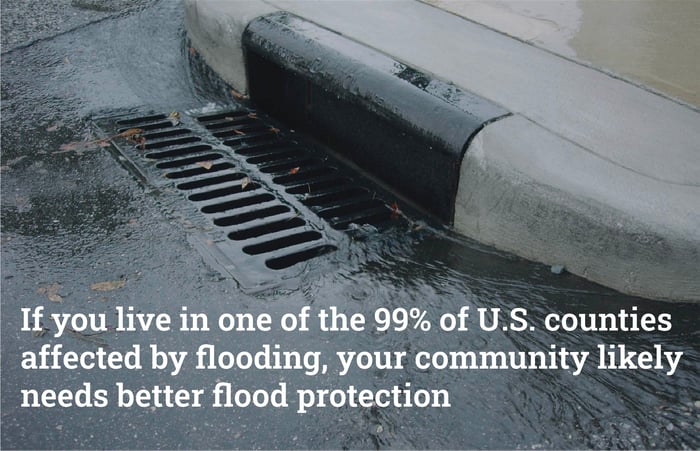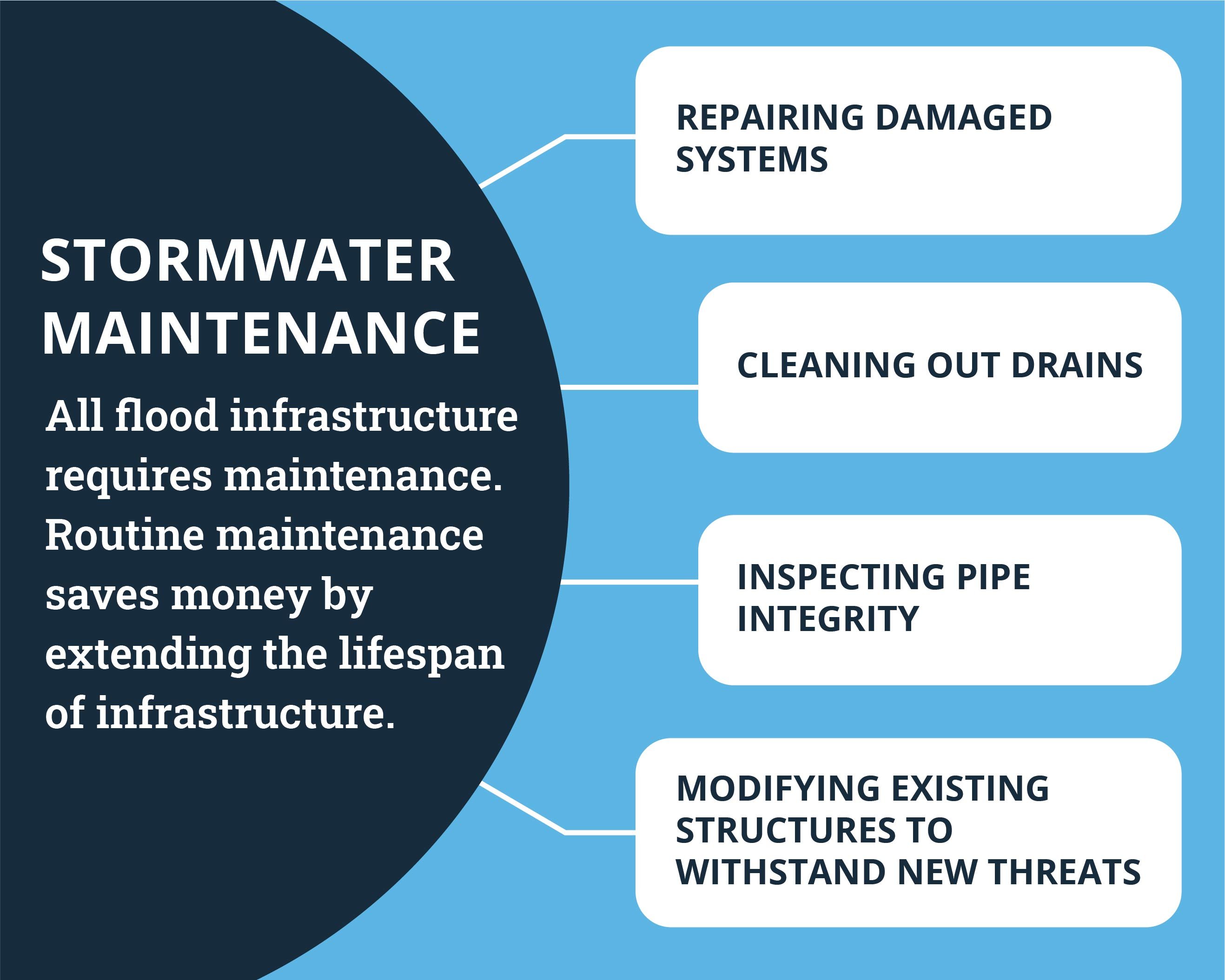Why Your County Needs Better Stormwater Maintenance
Maintaining existing flood infrastructure is necessary to keep communities safe
If you live in one of the 99% of U.S. counties impacted by flooding, your community likely needs better flood protection. But better protection does not always mean new seawalls, pipes, or ponds. Many counties exacerbate their flood problem by neglecting the stormwater systems they already have in place. For flood-affected citizens in these counties, one solution is simple: “It’s broken. Fix it.”
 Mecklenburg County uses video technology to assess drainage pipe conditions
Mecklenburg County uses video technology to assess drainage pipe conditions
The Takeaway
Counties should want to improve their stormwater maintenance. Proper maintenance saves money by extending the lifespan of infrastructure and keeps residents safe. But flooding infrastructure projects often get neglected after construction. Pipes, ponds, ditches, and other flooding solutions lose effectiveness and longevity without routine inspection, maintenance, and repairs. If counties don’t care for these assets, they won’t protect anyone, and could even make flooding worse.

What is proper stormwater maintenance? All flood infrastructure needs some kind of maintenance. Routine upkeep can mean cleaning out drains, inspecting pipe integrity, modifying existing structures to withstand new threats, or repairing damaged systems.
What happens without maintenance? Stormwater infrastructure is only as good as its upkeep. For example, drainage pipes installed in past decades require more and more maintenance as they age to serve even their initial purpose — which itself is insufficient for modern-day flooding. Clogged pipes don’t serve their purpose and can even break, which can cause more flooding, sinkholes, and impact home foundations.

Yes, and: Routine maintenance requires resources, but ignoring it can turn a flood solution into a flood catalyst. Neglect creates problems for all kinds of flood protection.
-
Retention ponds need to be monitored for embankment erosion and the overgrowth of vegetation that prevents proper drainage, and they need to be dug out regularly to prevent sediment from making the pond shallower and maintain space for water storage.
-
Drainage ditches have to be kept clear and at the right depth - otherwise, they clog and can lose effectiveness from sediment buildup, standing water, and debris blockages.
-
Seawalls and other hard armoring solutions take a beating from pounding waves. They need to be stabilized and have cracks repaired periodically to continue to provide protection.
Go deeper: Consider Horry County, S.C. The county has a stormwater drainage system that includes culverts, ditches, drains, and swales. The county also has a flood maintenance backlog of nearly 600 projects from the past 4+ years. This lack of upkeep contributed to the severity of a flood event in early 2021 that turned closed as many as 92 roads at one time across the county.
-
Similarly, Escambia County, Fla. has taken over an impressive 400+ retention and holding ponds since 2002, but they lack the staff to maintain them.
-
What the experts say: “Operationally, we are budgeted below our 2006 level… Our biggest challenge is manpower. Being able to acquire manpower and retain manpower. That’s our biggest challenge,” Escambia County Public Works Director Wes Moreno said at a county meeting.
Politicians don’t prioritize flood maintenance. Like many things flooding, maintenance doesn’t get the attention it deserves from elected officials. Politicians prefer projects that can be seen, like new roads or sidewalks, and proper maintenance doesn’t generate impressive headlines. But ignoring maintenance adds up for counties and taxpayers.
Take action: Elected officials will continue to neglect flood maintenance because they don’t think voters care about it. Residents routinely impacted by flooding can and should ask for new projects and infrastructure, but sometimes it is just as important to ask for simple maintenance and repairs to existing infrastructure.

